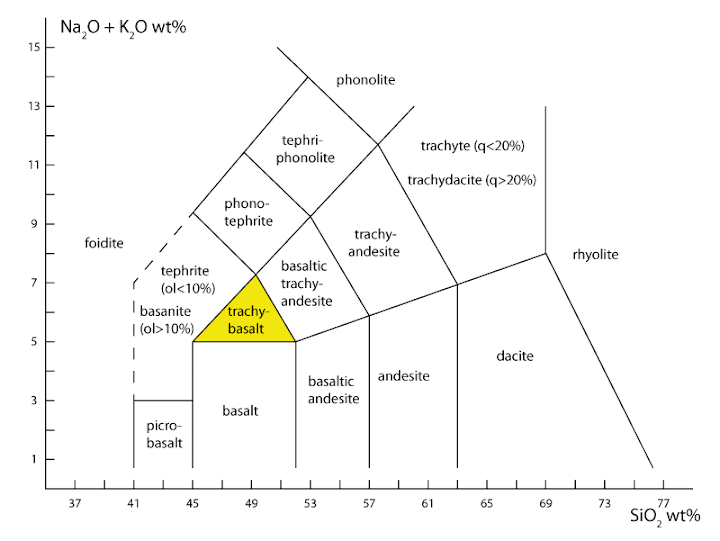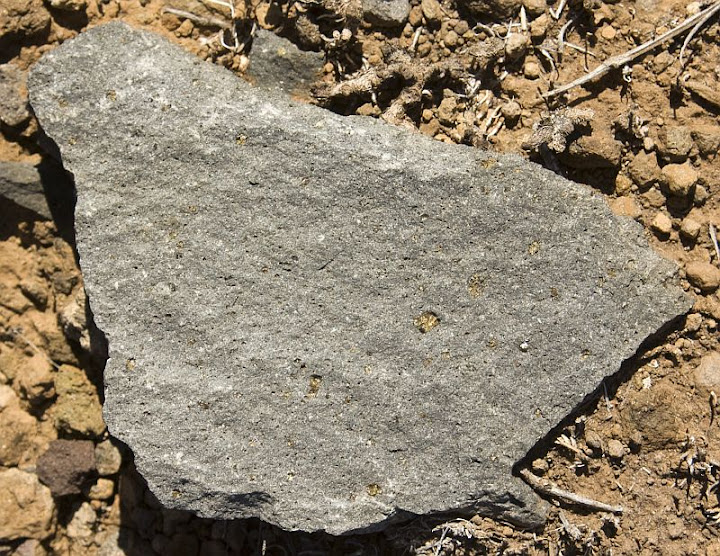Hawaiite is a volcanic rock that resembles basalt. It is generally somewhat lighter gray in color than basalt which usually is either black or dark gray. Hawaiite often contains olivine phenocrysts.

Hawaiite from Hawaii (Mauna Kea lava flow in NW part of the island few kilometers from Hapuna Bay). Width of the sample is 12 cm.
This rock type was originally defined by an American geologist Joseph Iddings in 1913 as an olivine basalt with andesine as the normative plagioclase1. This definition makes it different from ordinary basalt which has more calcic plagioclase in its composition. Sodic plagioclase tends to be lighter in color which explains why it is also lighter in color.
Modern definition of this rock type is based on the chemical composition as is the case with most other volcanic rock types. It is a sodic trachybasalt with Na2O – 2.0 ≥ K2O2. This definition may be somewhat cumbersome and alienating to many but it makes it possible to define the rock type precisely and unequivocally. However, in my experience, this term is relatively rarely used. “Trachybasalt” is preferred although it also seems to find use in scientific papers only.
The term “hawaiite” is obviously from Hawaii and the samples below are also from the Big Island of Hawai’i. These samples of the rock type shown below are from its type locality. Hawaiite in Hawaii typically erupts during late-stage volcanic activity3 which is fairly typical. Late-stage volcanic activity tends to be more alkaline (magma contains more sodium and potassium) not only in Hawaii but in other hot spot volcanic islands as well. Typical example of alkaline volcanism can be found in the Canary Islands.

Classification of volcanic rocks based on TAS diagram. Trachybasalt field annotated in yellow. Hawaiite is a sodic trachybasalt. Trachybasalts that are not hawaiite have no specific names. They are simply potassic trachybasalts.

A sample (10 cm across) resting on Hawaiian soil. Green mineral is olivine.
References
1. Jackson, J. A. (1997). Glossary of Geology, 4th Edition. American Geological Institute.
2. Le Maitre, R. W. (2005). Igneous Rocks: A Classification and Glossary of Terms: Recommendations of the International Union of Geological Sciences Subcommission on the Systematics of Igneous Rocks, 2nd Edition. Cambridge University Press.
3. Hazlett, R. W. & Hyndman, D. W. (1996). Roadside Geology of Hawai’i. Mountain Press Publishing Company.
Leave a Reply